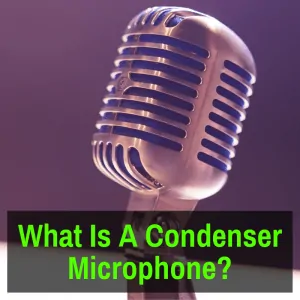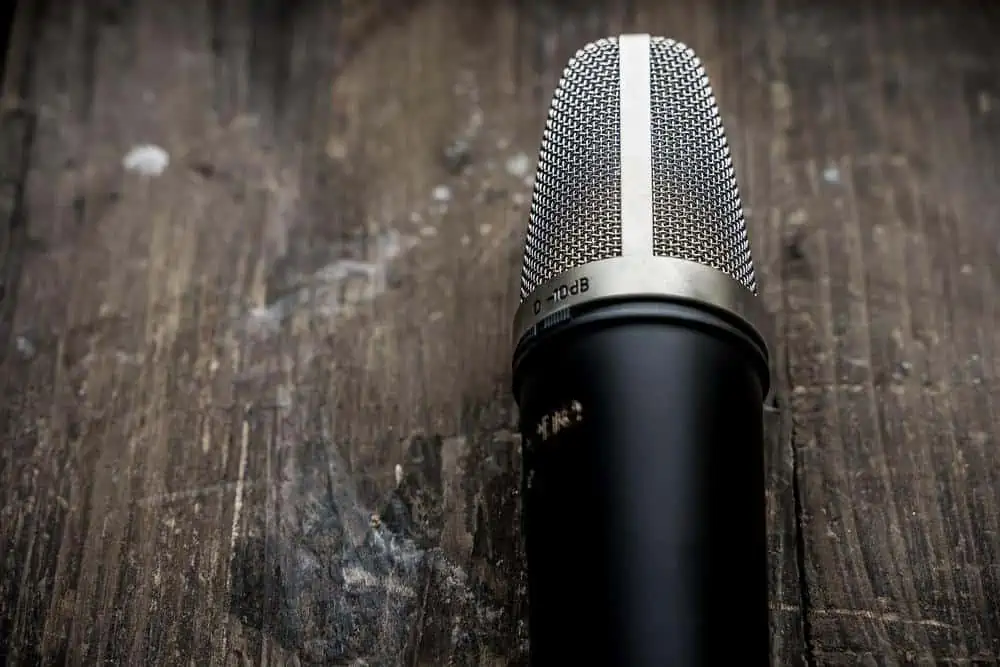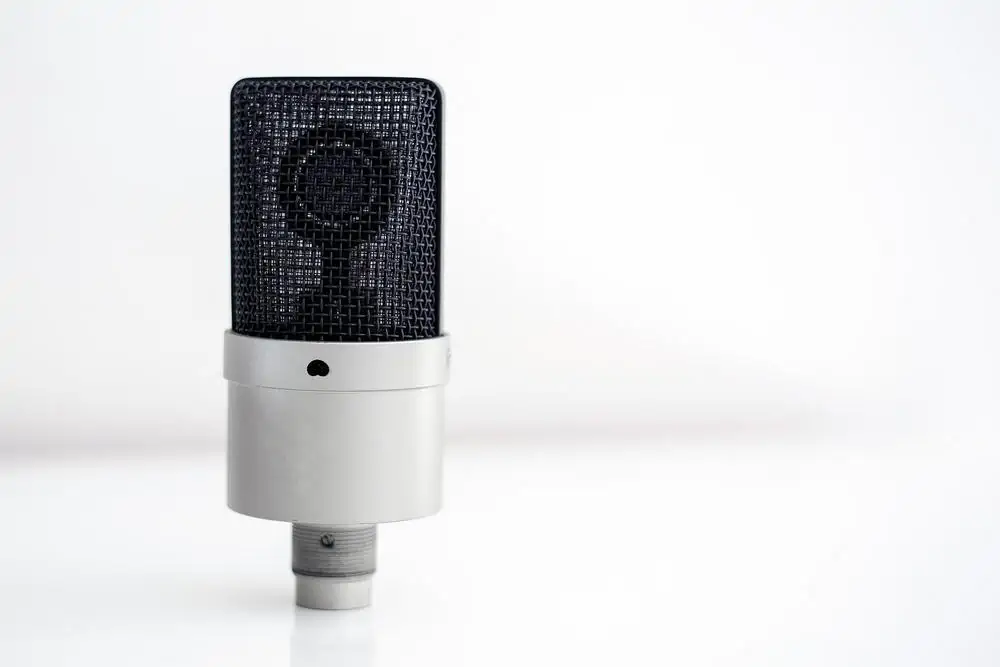 If you need a microphone, you will have to decide between a condenser mic and a dynamic mic.
If you need a microphone, you will have to decide between a condenser mic and a dynamic mic.
So which one is better?
The answer is: neither.
Both types have their advantages and disadvantages, making each better suited for specific applications.
We will give a definition of a condenser microphone and examine how one works and what makes it different from a dynamic mic.
More importantly, we will look at the situations for which a condenser mic is preferable.
If you want to skip the reading, the main point is this: condenser mics are generally preferred for recording at home or in the studio (see our reviews of the best here), while dynamic mics are preferred for live performances (reviews here).
Table of Contents
What Is A Condenser Microphone?
A condenser mic has a thin membrane, generally referred to as a diaphragm, affixed close to a solid metal plate. The diaphragm is electrically conductive, usually made from gold-sputtered mylar or a thin metal foil (generally found in older models).

When sound enters the mic, the sound waves move the diaphragm back and forth, changing the distance between it and the solid metal plate. Together, they function like a capacitor (in fact, condenser mics are referred to as capacitor microphones in some parts of the world).
The capacitance changes as the two metals come closer, i.e. it changes with the rhythm of the sound waves. In this way, the sound is converted into an electrical signal.
The capacitor is quite small and the signal very weak, since it produces almost no current. An impedance converter makes the signal more stable by adding signal current. In order to power this, external power is needed. This is supplied by P48 phantom power, which is usually supplied by a preamp.
Difference Between Condenser And Dynamic Microphone
The main differences between condenser mics vs dynamic mics are cost and sound quality. High quality condenser mics give you much better sound quality, but they also cost much more. They are more sensitive and less noisy. They also require external power.
Advantages of Condenser Mics
Most of the following advantages only apply to high quality mics, not the sub $100 versions that have flooded the market from China.
Better Sound Quality
The diaphragm in a condenser mic weighs much less than the coil in a dynamic mic, which means it can follow the sound waves much more easily and accurately.
This gives it a wider frequency response and a better transient response (i.e. bursts of energy like the ‘pick’ of an acoustic guitar). It also gives it a much higher sensitivity (i.e. output) and mans that it produces less noise.
Less Gain Required From The Preamplifier
Condenser microphones require a voltage to charge the metal plate which generates the electric current when moved by sound waves.
As a result, they have a higher output than dynamic mics and don’t need as much additional gain from the preamp to bring their signal up to line level (the same level as other audio signals—read about the function of a preamp here).
In fact, some dynamic mics need so much gain that many cheaper preamps can’t handle them. This is never a problem with condenser mics. If you’re not sure what this means, read “What is microphone gain?”
More Detail
Because of the extremely thin and light diaphragm, condenser mics can capture much more detail in the sound than dynamic mics. They are much better at capturing the subtle nuances in a singer’s voice.
More Defined High-End
Dynamic microphones are terrible with high frequencies. Their frequency response starts to roll off around 12-15 kHz, making it difficult, if not impossible, to get a breathy vocal sound. If you want a vocal track with a lot of ‘air’ you need a condenser mic.
Disadvantages of Condenser Mics
There are four main disadvantages in comparison to dynamic mics.
Higher Cost
High quality condenser mics cost much more than dynamic mics. You can find cheap ones that cost less than $100, but they will not sound good, basically negating any advantage of getting one in the first place.
External Power Required
Condenser mics need an external power supply to run, while dynamic mics do not. This power comes in the form of P48 Phantom Power and is generally supplied by a preamplifier or an audio interface. You could also use a separate phantom power supply.
More Likely To Pick Up Unwanted Environmental Sounds
Due to their higher sensitivity (one of their advantages), condenser mics pick up much more ambient noise. This is why they are generally preferred in the studio, where ambient noise and interference can be controlled or eliminated, while dynamic mics are preferred for live performances.
Less Robust
Dynamic mics are virtually indestructible, which is another reason they are generally preferred for live performances. Condenser mics have more moving and more sensitive parts and thus can’t withstand the extreme levels of punishment a dynamic mic can handle. For more info on the differences between the mics, head here.
Uses Of Condenser Microphones
In general, condenser microphones are used for studio recording, while dynamic mics are preferred for live performances. Here are a few common situations and a suggestion for which type of mic would be best.
Recording Vocals At Home Or In The Studio
Get a large-diaphragm condenser mic.
Recording Acoustic Guitar
Get a small-diaphragm condenser mic.
Recording Cello Or Bass
Get a large-diaphragm condenser mic.
Recording Drums
Get a combination of the two, with condenser mics being best for toms and dynamic mics for everything else.
Live Performance
Get a dynamic mic.
Concert Taping
Get a small-diaphragm condenser mic.
Condenser Microphone Definition: Final Thoughts
We hope you now have a good understanding of condenser microphones and the types of situations for which they are best suited. If you still have questions, please ask them in the comments below. Here is a good video on the differences between the two types of mics that might help, too.

Leave a Reply